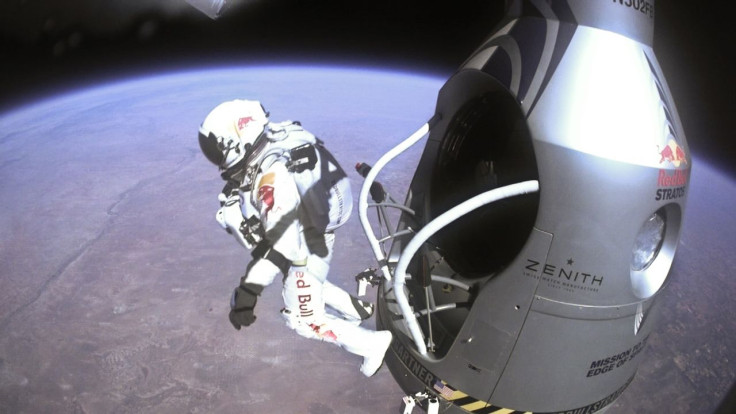Felix Baumgartner Fell Even Faster Than Estimated In Red Bull Stratos Jump: Report

‘Fearless Felix’ Baumgartner fell even faster than expected when he jumped from the stratosphere last year, according to a new report.
In October, the Austrian daredevil leapt from a capsule suspended 24 miles above the Earth, with initial estimates pegging his top speed at 834 miles per hour, or Mach 1.24. But new figures show that Baumgartner actually went up to 843 miles per hour, or Mach 1.25.
Baumgartner went supersonic 34 seconds after stepping off of the capsule’s edge, and attained his maximum speed 50 seconds into freefall. All in all, the freefall portion of Baumgartner’s skydive lasted four minutes and 20 seconds, and he passed through some terribly cold portions of the atmosphere where the temperature dipped down to -95.62 degrees Fahrenheit.
In late January, the Red Bull Stratos team submitted its final numbers to the U.S. National Aeronautic Association and the Federation Aeronautique Internationale, which oversees air sports across the globe.
The observer from the NAA and the FAI, Brian Utley, “pointed out that Baumgartner’s altitude was especially remarkable because it was a "quantum leap" over the previously known highest exit altitude, Joe Kittinger’s 1960 jump from 102,800 feet.
One of the challenges that Baumgartner and his team faced in trying to set the world record was making sure it could be verified. GPS-based tracking was obviously the best solution, but it was unclear just how well systems would function as Baumgartner rapidly descended from space, and whether any tumbling or spinning would affect the readings. Another possible issue was disruption created by a sonic shockwave, once Baumgartner inched over Mach 1.
Baumgartner wore four GPS tracking systems, three in his chest pack and one in his parachute rig. The primary GPS tracking system used an antenna fixed to the back of his helmet.
Test flights seemed to indicate the system was working fine, but the real trial would come with the jump from the edge of space.
At zero hour, the systems performed without a hitch, and there was no observable sonic barrier, according to the report.
The team also used a special weather balloon to take weather data in order to calculate the speed of sound – which changes with temperature – at high altitudes and estimate where Baumgartner would cross the sound barrier. The balloon turned out to be a reliable prediction tool, according to the report.
While the Red Bull Stratos event was a media sensation and a thrilling event to witness, Baumgartner’s high dive will also contribute to the development of better spacesuits and safety systems for astronauts.
“I can think of no greater honor for myself – or for this team – than to know that people informed by our mission will use the data to take aerospace safety to the next level; or to spark children’s interest in science; or simply as inspiration to pursue their own goals,” Baumgartner wrote in a foreword.
© Copyright IBTimes 2025. All rights reserved.





















